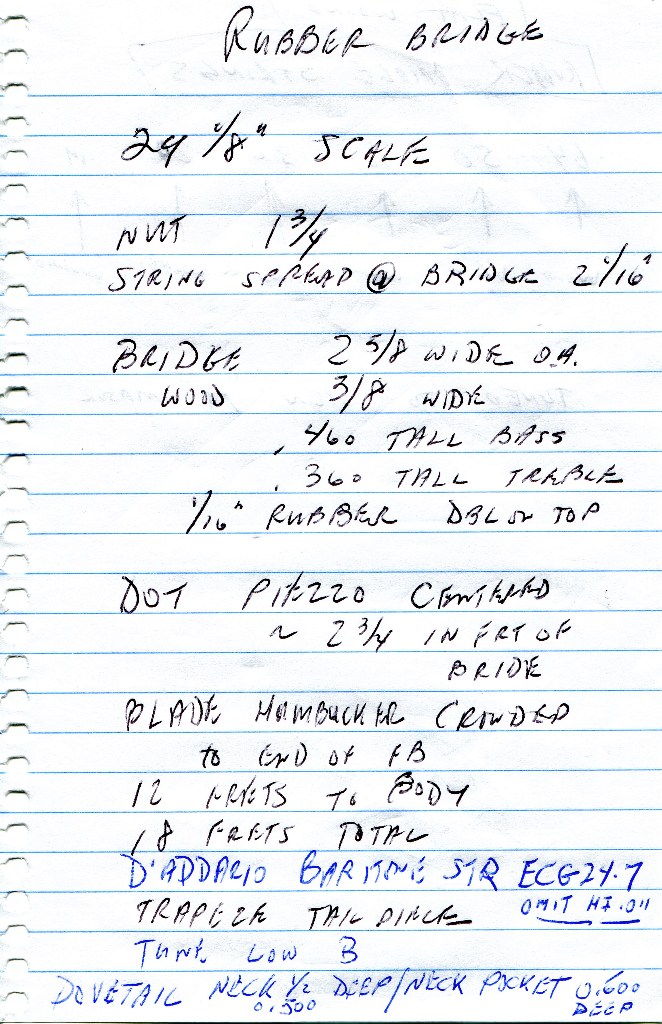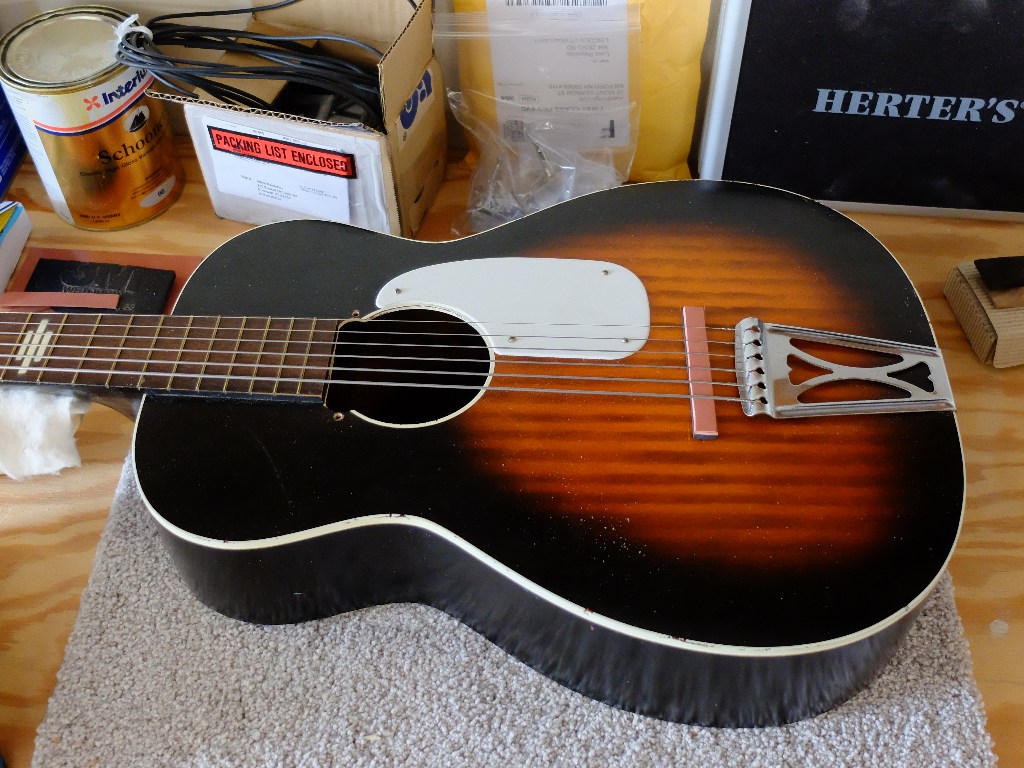
If you buy a rubber bridge guitar it will cost about $1,000, or, for about $250 you can get one of the cheap Stella’s that are mostly used as the base instrument, add a couple pickups, and voila. A client brought me this Stella to convert. To work from, we had one of the guitars that Reuben Cox had put together. Conversion was pretty straight forward. There are two pickups each wired separately to its own jack with no controls, and the wiring needs to include a ground for the tailpiece –
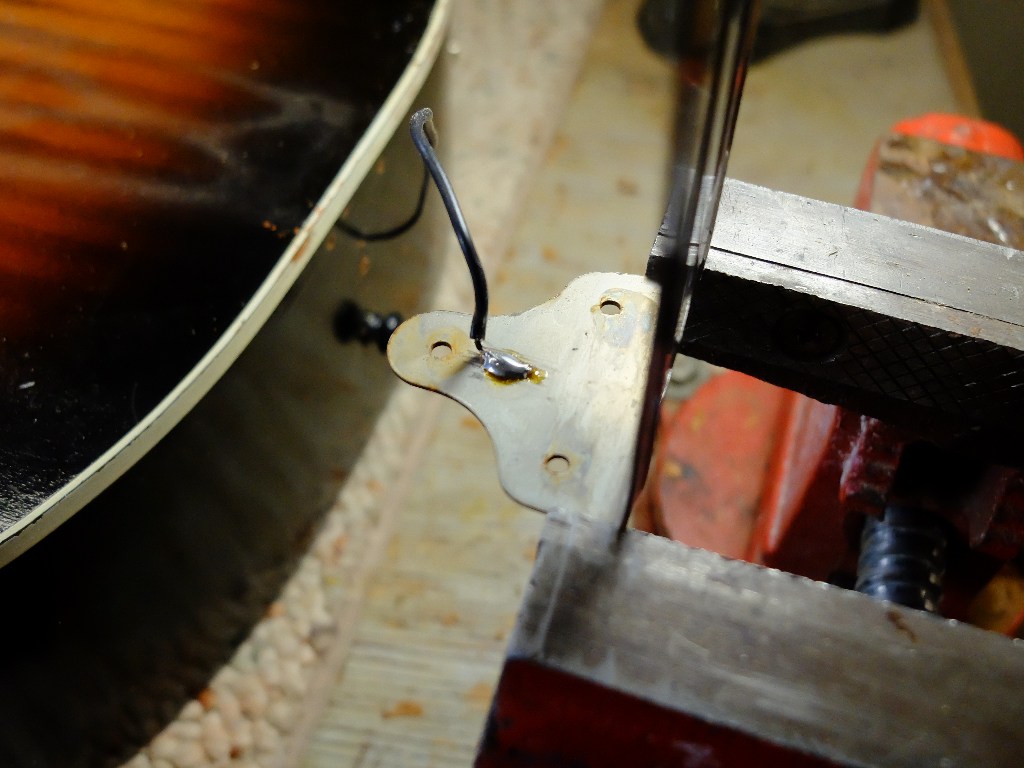
The output jacks are centered in the lower bout on the ‘away’ side – and we found that an access hole on the back greatly assists the wiring, especially since the Piezo pickup placement is determined by a hunt-and-see approach.
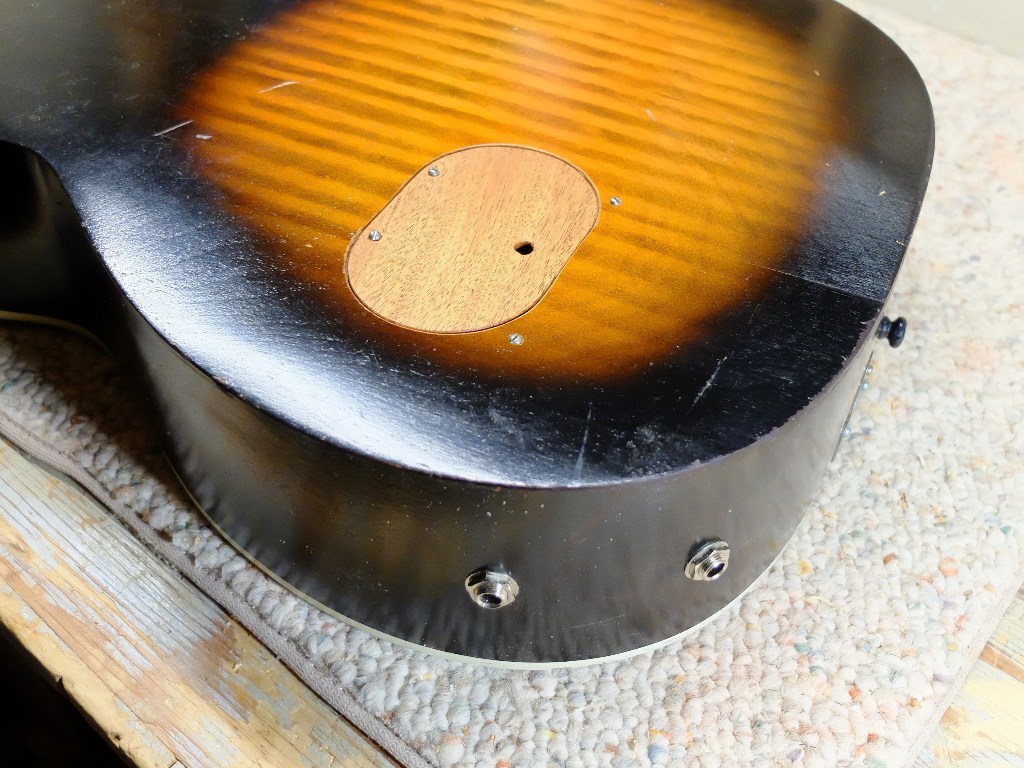
Given the journeyman quality of materials used on these Stellas, I had no problem resorting to the same hole saw I use for roughing in plumbing to cut the access hole.
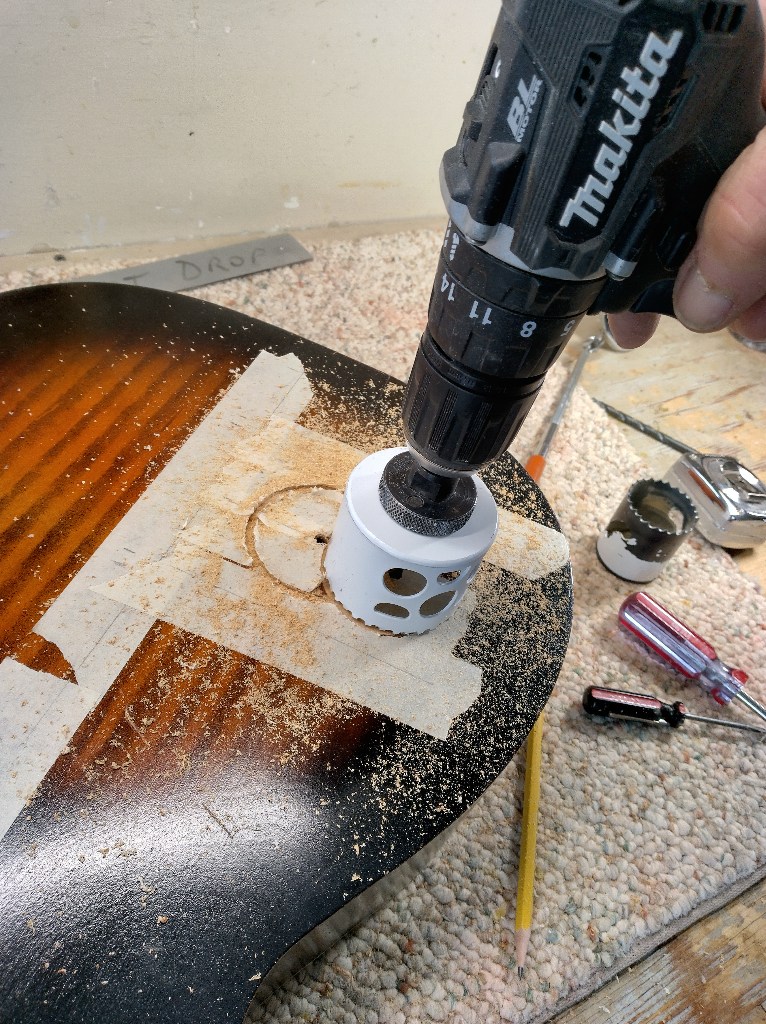
The bridge is made from a piece of pine wrapped in 1/16″ utility plumbing rubber sheet available at your local hardware store in the plumbing section. Picture below of gluing the rubber – cyanoacrylate (crazy glue) works well. I made the pine 3/8″ wide, about 2-7/8″ long and height according to action.
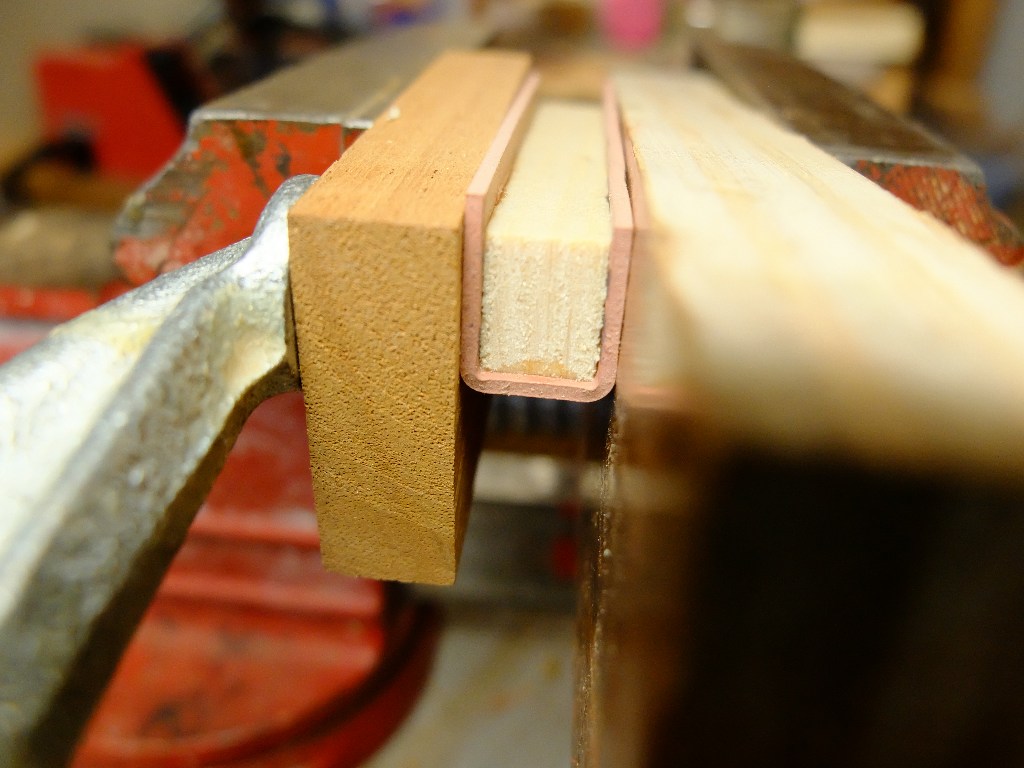
The pickups we used were a K&K Big Shot and a Seymour Duncan ‘lil 59 strat neck position mini humbucker. The fingerboards on the Stellas are flat, so that in theory dictates an adjustable pole-piece pickup, or one with a flat blade, but in our short experience that didn’t matter. The piezo, at least the Big Shot, is very hot and it took two or three trial placements to find one that gave a balanced sound. We used 3M double-sided foam tape, like you might use to attach a wall calendar to your wall, instead of the very thin tape that comes from K&K because we needed to tone the piezo down. The foam tape is removable to an extent allowing trial placements. This one ended up between the bridge and the tail block just to the bass side. The neck pickup is crowded up to the end of the fingerboard and requires some fancy woodwork at that end of the soundhole.
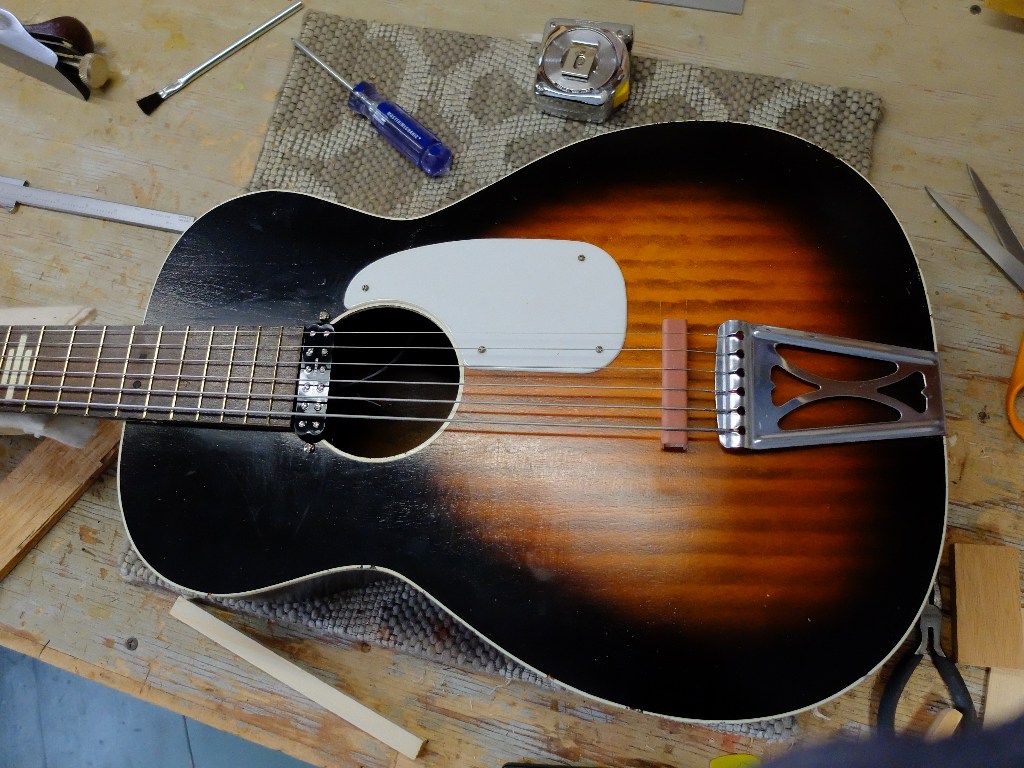
We used baritone strings tuned to a low B, omitting the top string from the flatwound 7-string D’Addario ECG24-7set. Here are my notes from the one we measured. Play the outputs into different amps, etc.
